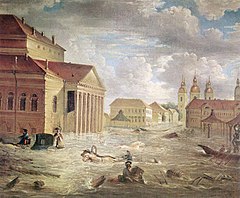
The Neva is a river in northwestern Russia flowing from Lake Ladoga through the western part of Leningrad Oblast to the Neva Bay of the Gulf of Finland. Despite its modest length of 74 kilometres (46 mi), it is the fourth-largest river in Europe in terms of average discharge.

Kronstadt is a Russian port city in Kronshtadtsky District of the federal city of Saint Petersburg, located on Kotlin Island, 30 km (19 mi) west of Saint Petersburg, near the head of the Gulf of Finland. It is linked to the former Russian capital by a combination levee-causeway-seagate, the St Petersburg Dam, part of the city's flood defences, which also acts as road access to Kotlin island from the mainland.

Baron Ferdinand Friedrich Georg Ludwig von Wrangel was a Russia German explorer and officer in the Imperial Russian Navy, Honorable Member of the Saint Petersburg Academy of Sciences, and a founder of the Russian Geographic Society. He is best known as the chief manager of the Russian-American Company and governor of the Russian settlements in present-day Alaska.
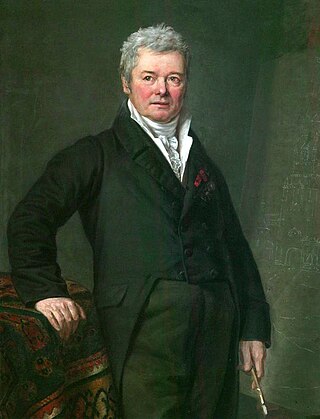
Fyodor Yakovlevich Alekseyev was a Russian painter. His contemporaries often called him the Russian Canaletto, in recognition of his masterful vedute.
Johan Peter Falk was a Swedish botanist and an apostle of Carl Linnaeus. His first name is sometimes spelled "Johann"; his middle name is sometimes spelled "Pehr"; and his surname is sometimes spelled "Falck". The standard author abbreviation Falk is used to indicate this person as the author when citing a botanical name. The genus Falkia is named for him.
The Russo-American Treaty of 1824 was signed in St. Petersburg between representatives of Russia and the United States on April 17, 1824, ratified by both nations on January 11, 1825 and went into effect on January 12, 1825. The accord contained six articles. It gave Russian claims on the Pacific Northwest coast of North America south of parallel 54°40′ north to the United States.

Viktor Yakovlevich Bunyakovsky was a Russian mathematician, member and later vice president of the Petersburg Academy of Sciences.

The Saint Petersburg Flood Prevention Facility Complex, unofficially the Saint Petersburg Dam, is a 25 km (16 mi) long complex of dams for flood control near Saint Petersburg, Russia. The dam extends from Lomonosov northward to Kotlin Island, then turns east toward Cape Lisiy Nos near Sestroretsk.
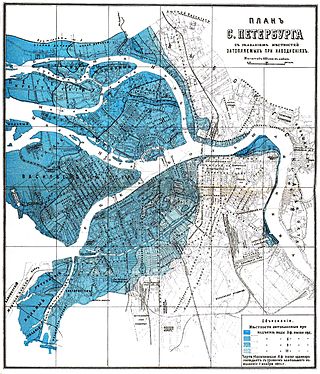
Floods in Saint Petersburg refer to a rise of water on the territory of St. Petersburg, a major city in Russia and its former capital. They are usually caused by the overflow of the delta of Neva River and surging water in the eastern part of Neva Bay but sometimes caused by melting snow. Floods are registered when the water rises above 160 cm with respect to a gauge at the Saint Petersburg Mining Institute. More than 300 floods have occurred since the city was founded in 1703.

Postoffice Bridge is a pedestrian bridge across Moika River in Saint Petersburg, Russia. It is located near the central Postoffice building, from which it takes the name.
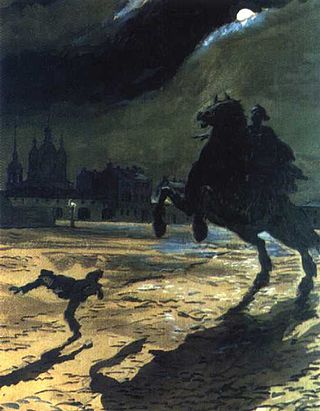
The Bronze Horseman: A Petersburg Tale is a narrative poem written by Alexander Pushkin in 1833 about the equestrian statue of Peter the Great in Saint Petersburg and the great flood of 1824. While the poem was written in 1833, it was not published in its entirety until after Pushkin's death, as his work was under censorship due to the political nature of his other writings. Widely considered to be Pushkin's most successful narrative poem, The Bronze Horseman has had a lasting impact on Russian literature. The Pushkin critic A. D. P. Briggs praises the poem "as the best in the Russian language, and even the best poem written anywhere in the nineteenth century". It is considered one of the most influential works in Russian literature and is one of the reasons Pushkin is often called the "founder of modern Russian literature".

The main Saint Petersburg Botanical Garden, officially known as the Russian Academy of Sciences Vladimir Komarov Botanical Institute's Botanical Garden of Peter the Great, is the oldest botanical garden in Russia and the best-known one out of botanical gardens of Saint Petersburg, the other two belonging respectively to Saint Petersburg State University and Saint Petersburg Forestry Technical University. It consists of outdoor and indoor collections situated on Aptekarsky Island in Saint Petersburg and belongs to the Komarov Botanical Institute of the Russian Academy of Sciences. It is 18.9 ha in area, and is bordered by Aptekarsky Prospekt, Prof. Popov Street, as well as the embankments of the Karpovka and Bolshaya Neva rivers.
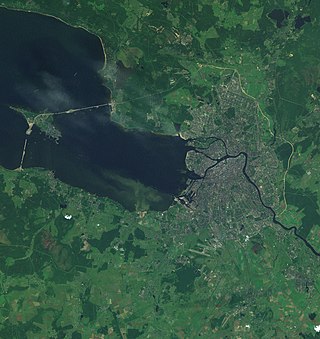
Saint Petersburg is a city and a federal subject located in the Northwestern Federal District of Russia. It stands at the mouth of the Neva River at the east end of the Gulf of Finland.

Saint Petersburg, formerly known as Petrograd and later Leningrad, is the second-largest city in Russia after Moscow. It is situated on the River Neva, at the head of the Gulf of Finland on the Baltic Sea. The city had a population of 5,601,911 residents as of 2021, with more than 6.4 million people living in the metropolitan area. Saint Petersburg is the fourth-most populous city in Europe, the most populous city on the Baltic Sea, and the world's northernmost city of more than 1 million residents. As the former capital of Imperial Russia, and a historically strategic port, it is governed as a federal city.

Smolensky Cemetery is the oldest continuously operating cemetery in Saint Petersburg, Russia. It occupies a rectangular parcel in the western part of Vasilievsky Island, on the bank of the small Smolenka River, and is divided into the Orthodox, Lutheran, and Armenian sections.
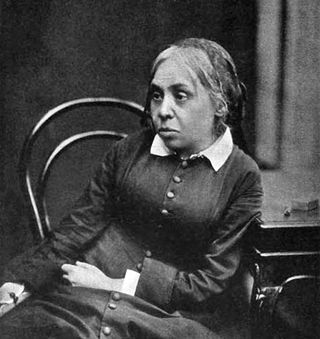
Nadezhda Dmitryevna Khvoshchinskaya, was a Russian novelist, poet, literary critic and translator. Her married name was Zayonchkovskaya. She published much of her work under the pseudonym V. Krestovsky. She later added "alias" to her pseudonym to avoid being confused with the writer Vsevolod Krestovsky.
Vasili Ivanovich Krasovsky was a Russian writer.
The following is a timeline of the history of the city of Saint Petersburg, Russia.

Events from the year 1824 in Russia
Events from the year 1914 in Russia.
